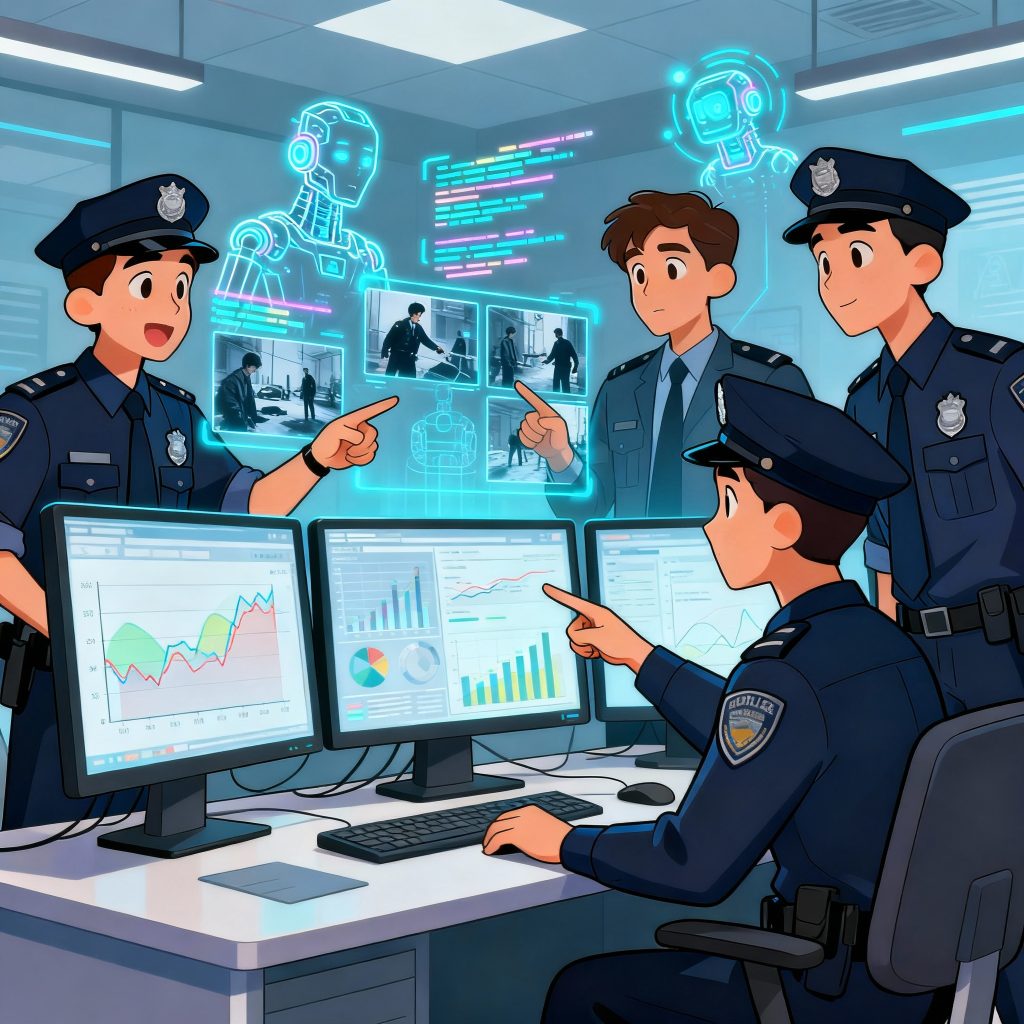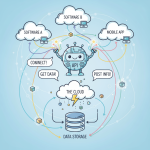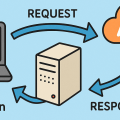Artificial Intelligence (AI) isn’t just transforming industries — it’s changing how police solve crimes. Around the globe, law enforcement agencies are turning to AI for everything from predictive policing and digital forensics to facial recognition and threat analysis.
So, do police use AI to solve crimes? Absolutely. But the story is more complex than technology alone — it involves ethics, accuracy, transparency, and human judgment.
In this article, we’ll explore how AI is used in modern policing, its benefits and risks, real-world examples, and what the future holds for tech-driven justice.
Understanding How Police Use AI
Law enforcement agencies increasingly integrate AI into their investigations and public-safety operations. Here are the primary ways AI assists them:
1. Predictive Policing
AI systems analyze past crime data to predict where and when crimes may occur. These models — often using machine learning algorithms — create “crime heat maps” that guide patrol deployments and prevent incidents before they happen.
For example, the Los Angeles Police Department (LAPD) experimented with a predictive system called PredPol (now Geolitica), which analyzed crime reports to forecast potential hot spots.
2. Facial Recognition
Police use facial recognition AI to identify suspects, missing persons, and victims. These systems match images from CCTV footage, social media, or databases with known individuals.
While effective, such tools are controversial due to potential bias and false positives — a reminder that AI is only as accurate as the data it’s trained on.
3. Digital Forensics
AI tools process massive amounts of data — from text messages and emails to surveillance videos — helping investigators uncover hidden links and timelines in complex cases.
For instance, AI-powered software can automatically analyze thousands of images or chat logs, drastically reducing manual labor and speeding up evidence discovery.
4. Natural Language Processing (NLP) in Reports
AI can review written police reports, transcriptions, and witness statements to detect patterns, connections, or inconsistencies. NLP algorithms help summarize large datasets, extract names, or identify emotional tone in witness testimonies.
5. Video and Audio Analytics
Computer vision models scan footage for anomalies — like abandoned bags, suspicious movements, or weapons — alerting officers in real time. Audio analytics can identify gunshots, breaking glass, or distress calls.
Real-World Examples of AI Solving Crimes
Here are a few notable examples showing how AI supports real investigations:
-
New York Police Department (NYPD): Uses AI-driven video analytics to spot unusual activity in real time.
-
Chicago Police: Implemented predictive models to identify individuals likely to be involved in violent crimes.
-
UK Metropolitan Police: Uses facial recognition in crowded areas to locate wanted suspects.
-
Interpol & Europol: Employ AI for cross-border cybercrime and terrorism analysis.
-
FBI: Uses machine learning in digital forensics to analyze seized devices efficiently.
Benefits of Using AI in Policing
AI brings transformative advantages to law enforcement:
1. Faster Crime Solving
AI dramatically reduces investigation time by automating evidence analysis, allowing officers to focus on critical leads.
2. Crime Prevention
Predictive analytics help allocate resources strategically, reducing crime in high-risk areas.
3. Pattern Detection
AI uncovers hidden relationships across cases — like recurring suspects or linked crime scenes — that human investigators might miss.
4. Data Management Efficiency
Police departments handle vast data volumes daily. AI helps organize, label, and retrieve information instantly.
5. Cost Reduction
By automating repetitive tasks, departments save time and operational costs while improving efficiency.
Challenges and Ethical Concerns
Despite its potential, using AI to solve crimes introduces serious challenges:
1. Algorithmic Bias
AI can reflect biases present in historical data. Over-policed neighborhoods, for instance, can become self-reinforcing “crime zones.”
2. Privacy Invasion
AI surveillance tools raise questions about data collection, consent, and civil liberties.
3. False Positives and Wrongful Arrests
Facial recognition has led to misidentifications, especially among minority groups. These errors highlight the need for strict human oversight.
4. Lack of Transparency
Some predictive or recognition systems are “black boxes,” making it difficult to explain how a decision was reached.
5. Over-Reliance on Technology
AI should assist, not replace, human judgment. Police officers must validate AI findings before taking action.
The Role of Developers and Data Scientists
If you’re a software developer, ML engineer, or data scientist, your work can significantly influence AI’s role in policing. Here’s how to build responsibly:
-
Ensure Data Fairness: Audit datasets for bias and representativeness.
-
Improve Explainability: Incorporate interpretable models and provide clear output reasoning.
-
Implement Human-in-the-Loop Systems: Always include manual review stages.
-
Prioritize Privacy: Use encryption, anonymization, and data minimization principles.
-
Follow Ethical Frameworks: Align with standards like IEEE’s Ethically Aligned Design and the EU’s AI Act.
Future of AI in Law Enforcement
The next decade will see even deeper AI integration in crime prevention and investigation:
-
Real-Time AI Surveillance: Edge computing will enable faster analysis directly on body cams and drones.
-
Multimodal AI Systems: Combining text, video, and audio for holistic case insights.
-
Explainable AI (XAI): Legal systems will demand transparency in AI-assisted decisions.
-
Federated Learning: Enables data sharing across departments while maintaining privacy.
-
Ethical Governance: Nations are drafting policies to regulate AI use in criminal justice.
As these technologies mature, the balance between security and civil liberty will remain a central debate.
Key Takeaways
-
Do police use AI to solve crimes? Yes — from predictive analytics to facial recognition, AI assists in prevention and investigation.
-
AI offers speed, precision, and pattern detection unmatched by traditional methods.
-
However, issues like bias, privacy, and transparency must be managed carefully.
-
Future systems will require explainability and human oversight for ethical use.
FAQs
1. How accurate is AI in solving crimes?
Accuracy varies based on data quality and algorithm design. Well-trained systems can significantly aid investigations, but human verification is essential.
2. Is AI surveillance legal everywhere?
No. Regulations differ by country. Some regions restrict facial recognition or predictive policing to protect privacy rights.
3. Can AI predict crimes before they happen?
AI identifies risk patterns but cannot foresee individual intent. It’s a tool for prevention, not prophecy.
4. What types of AI are used in policing?
Computer vision, natural language processing (NLP), predictive modeling, and deep learning are most common.
5. Will AI replace police officers?
Unlikely. AI enhances efficiency but lacks emotional intelligence, context understanding, and moral judgment.
Final Thoughts
AI is redefining how police departments approach investigations — but its success depends on balance. When used responsibly, it empowers justice systems to become smarter, faster, and fairer. However, unchecked deployment could erode privacy and public trust.
For innovators, policymakers, and technologists, the mission is clear:
Build AI that protects people, not just prosecutes them.











